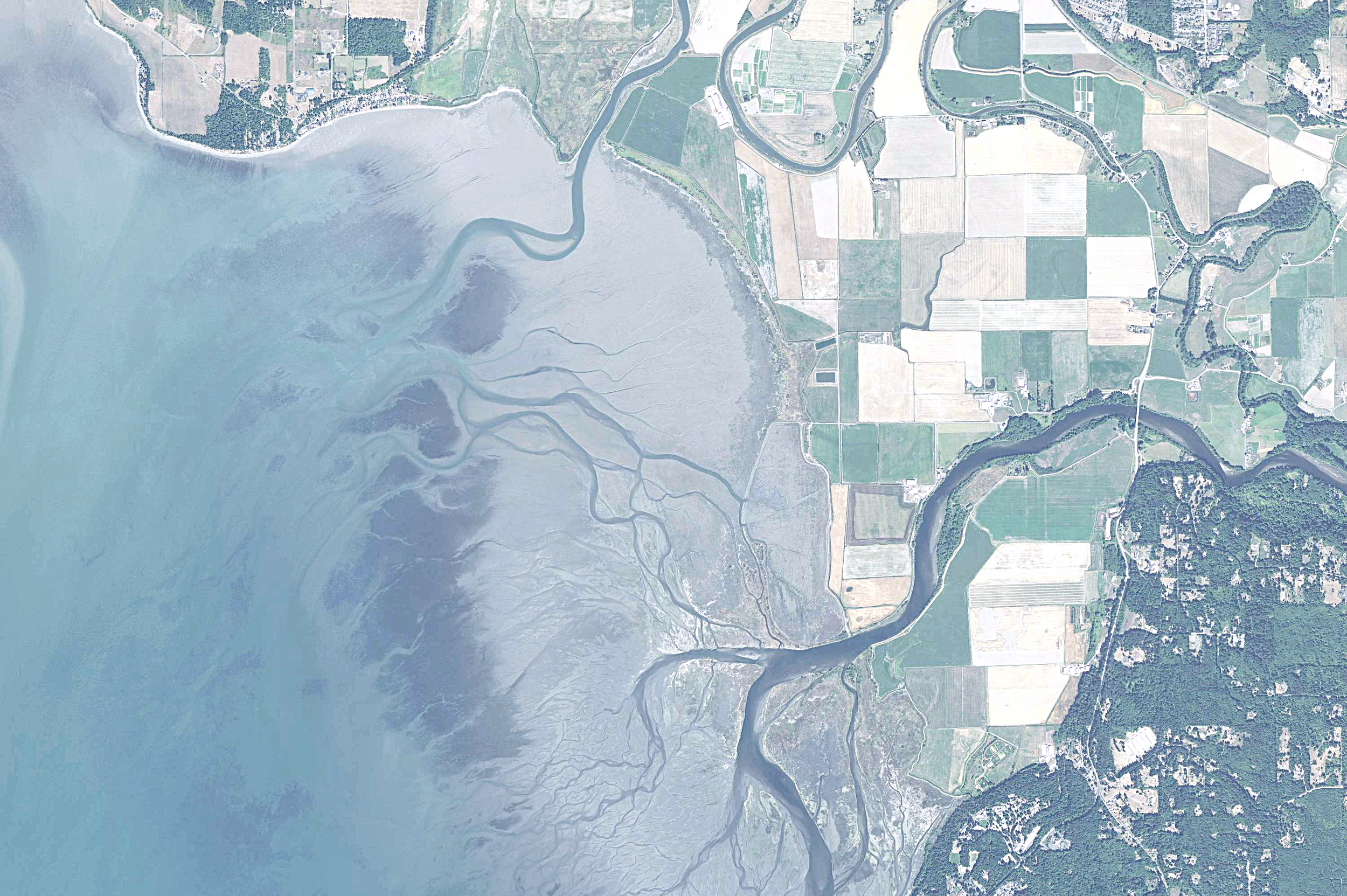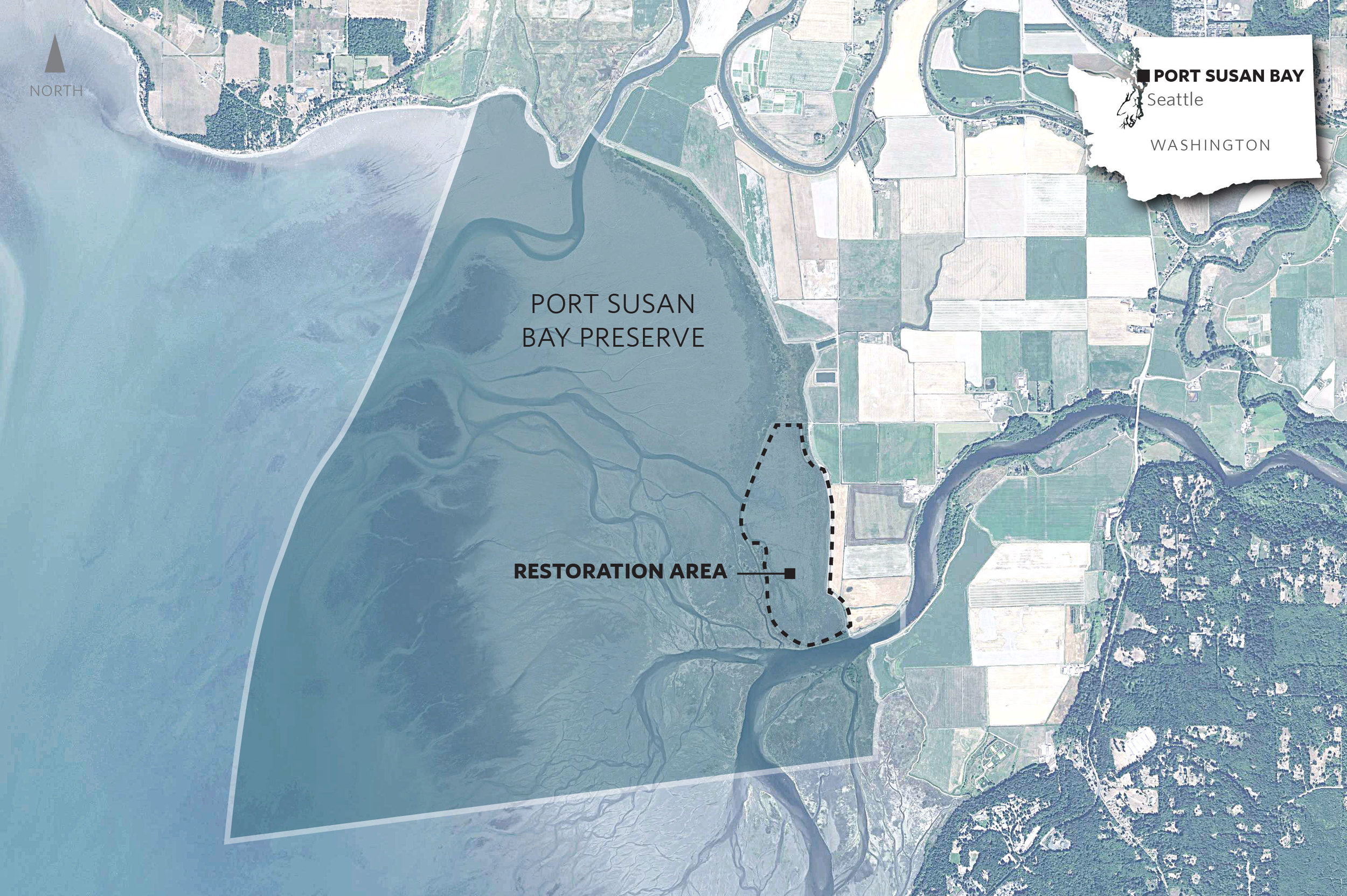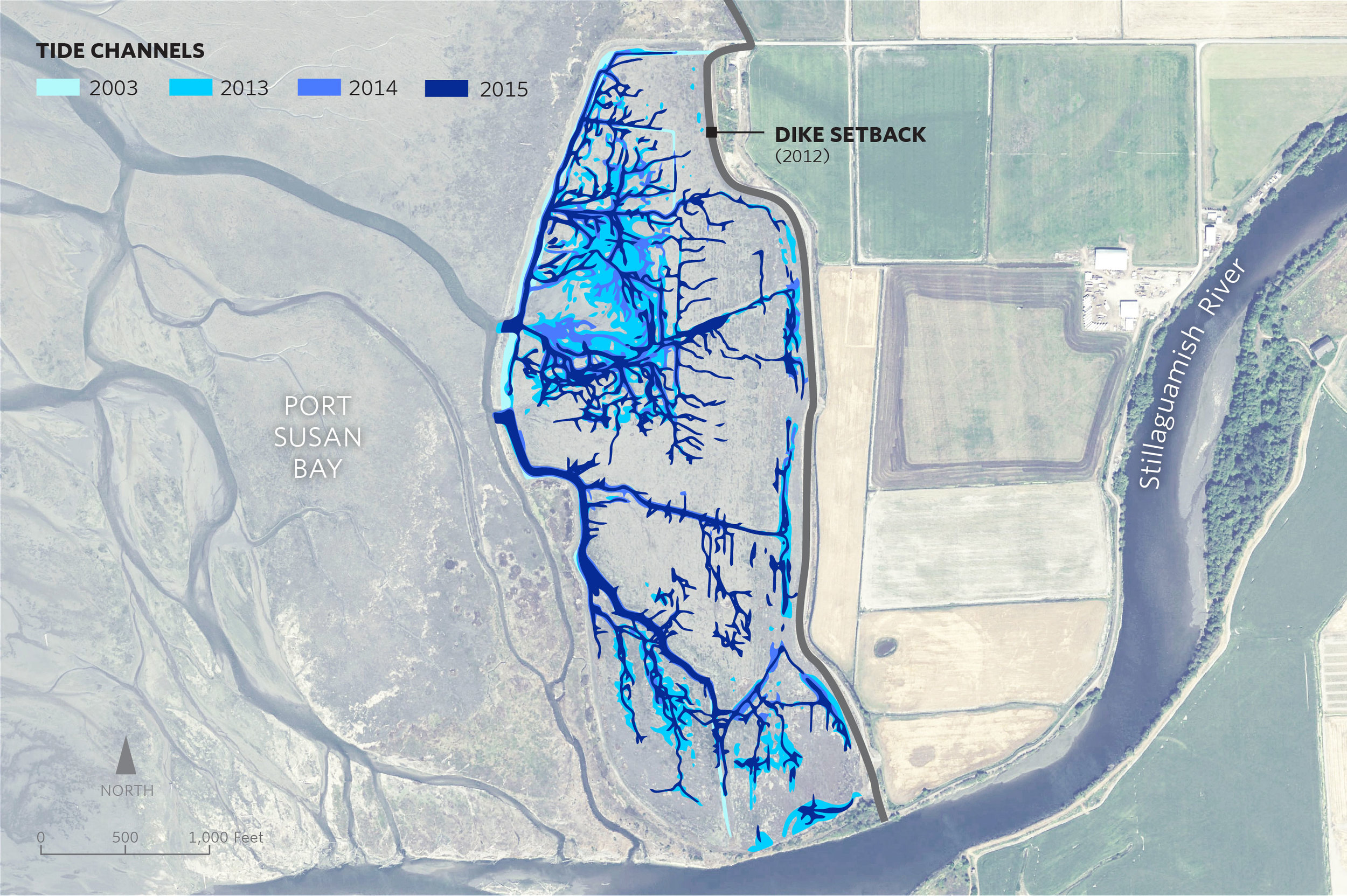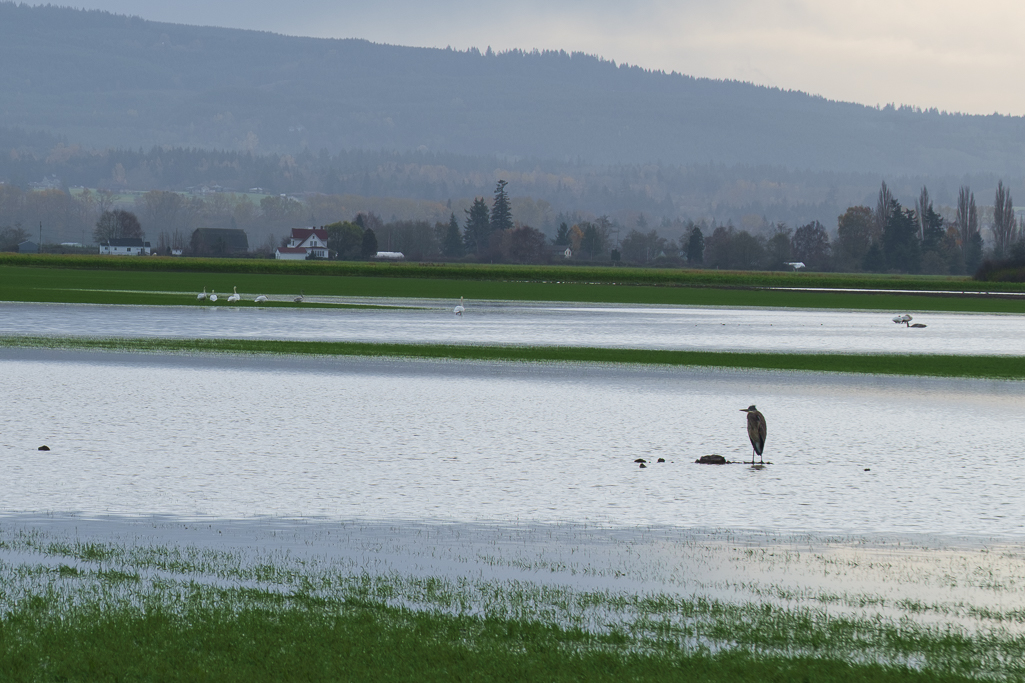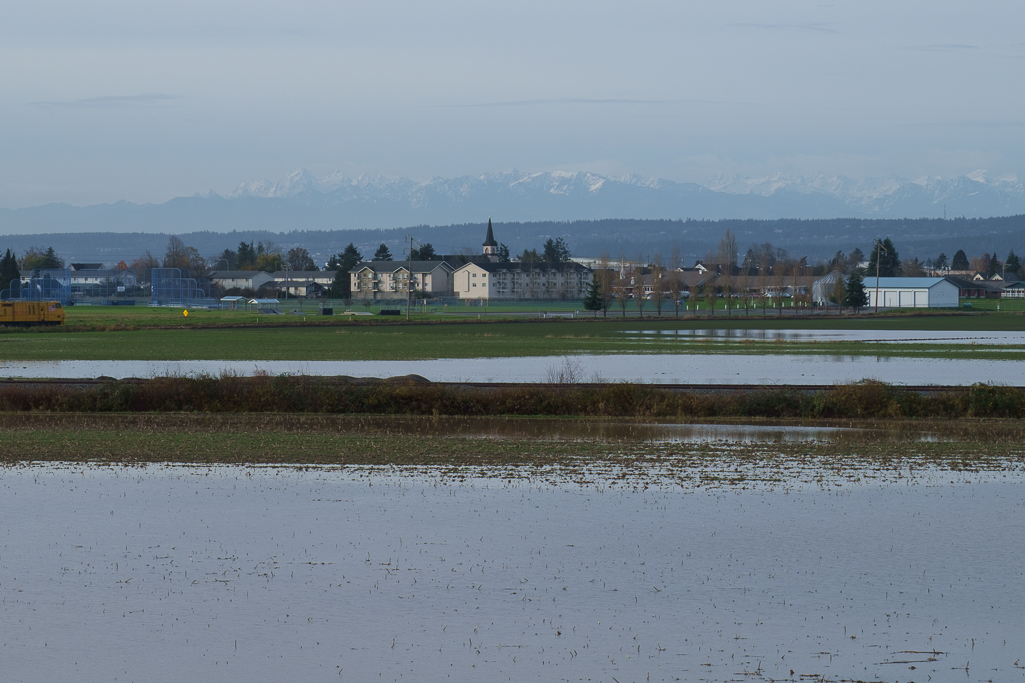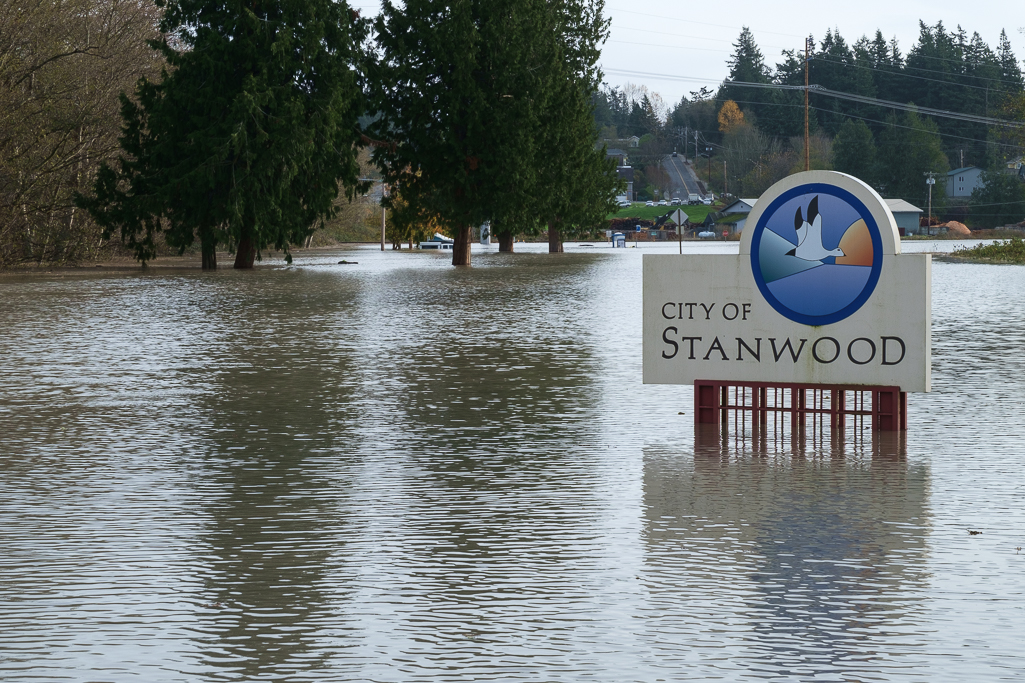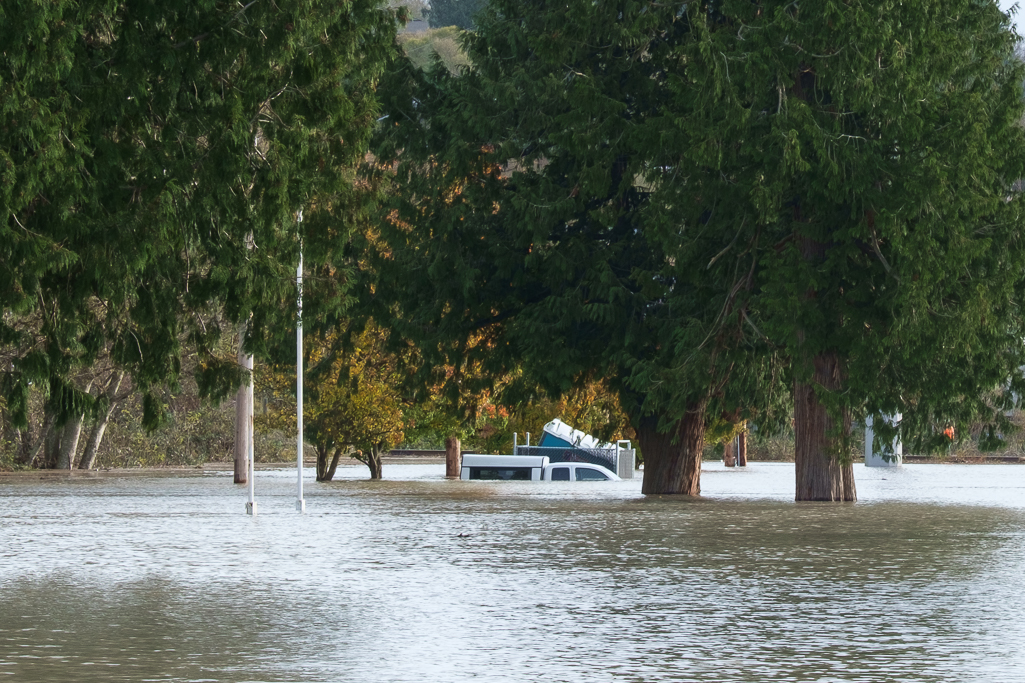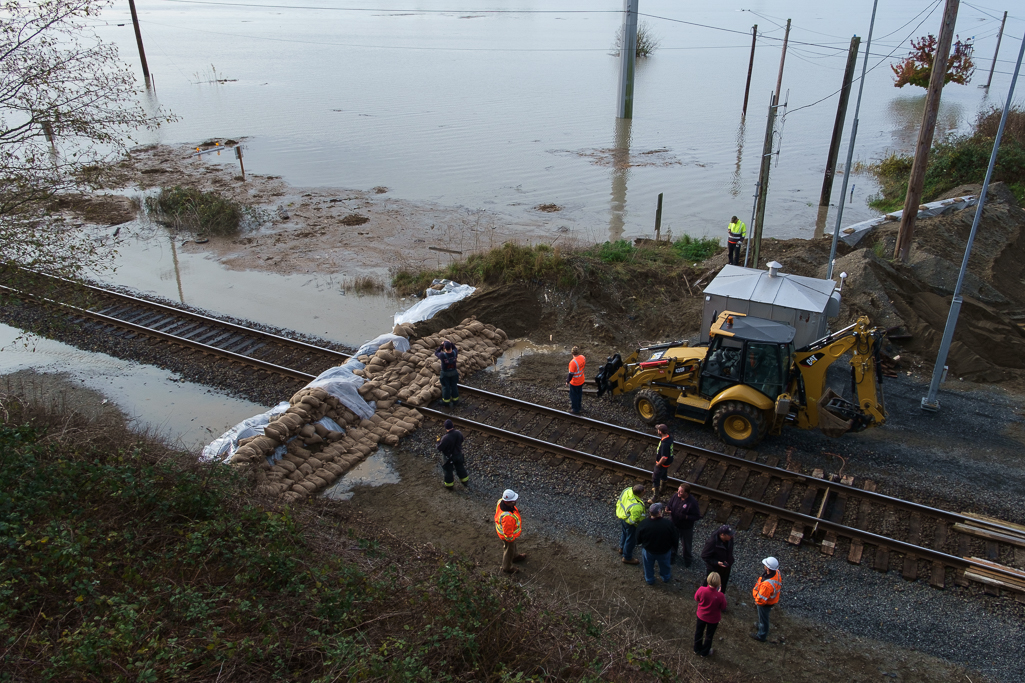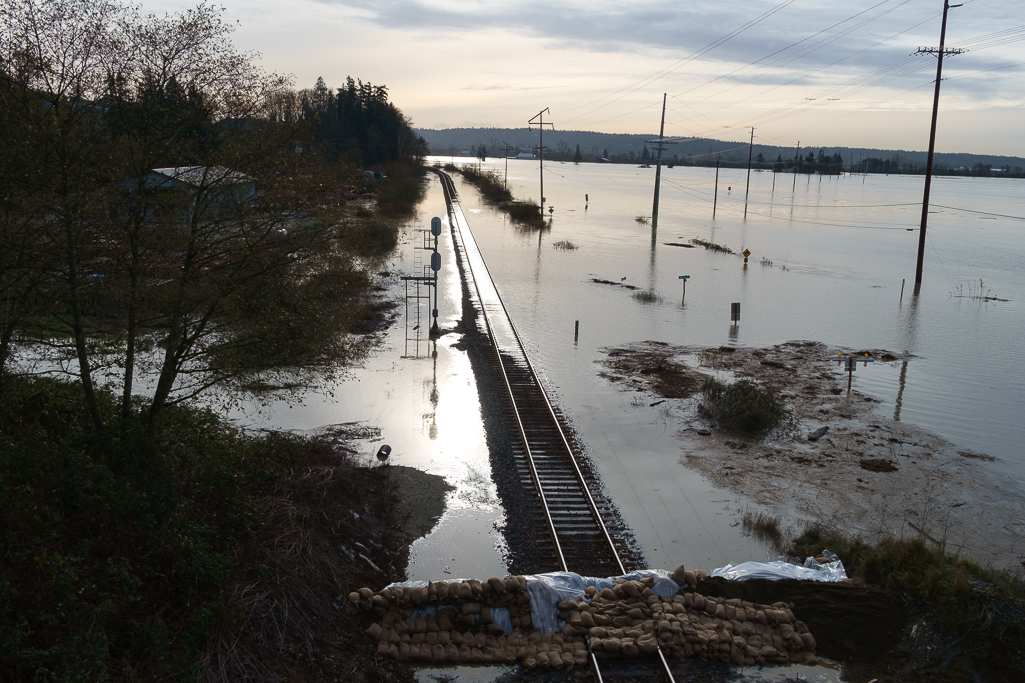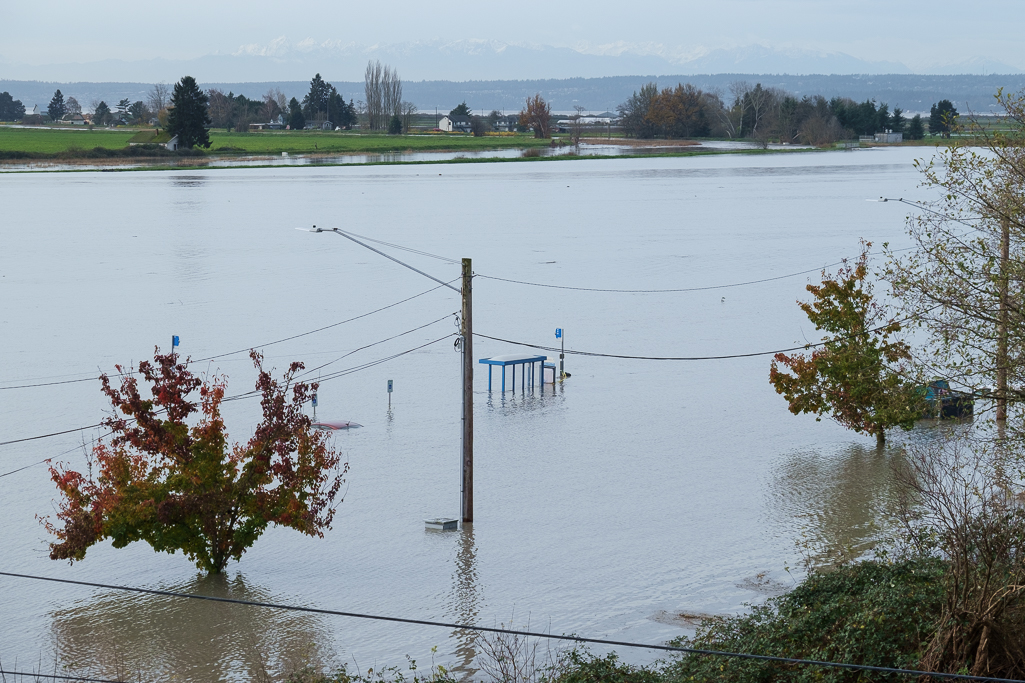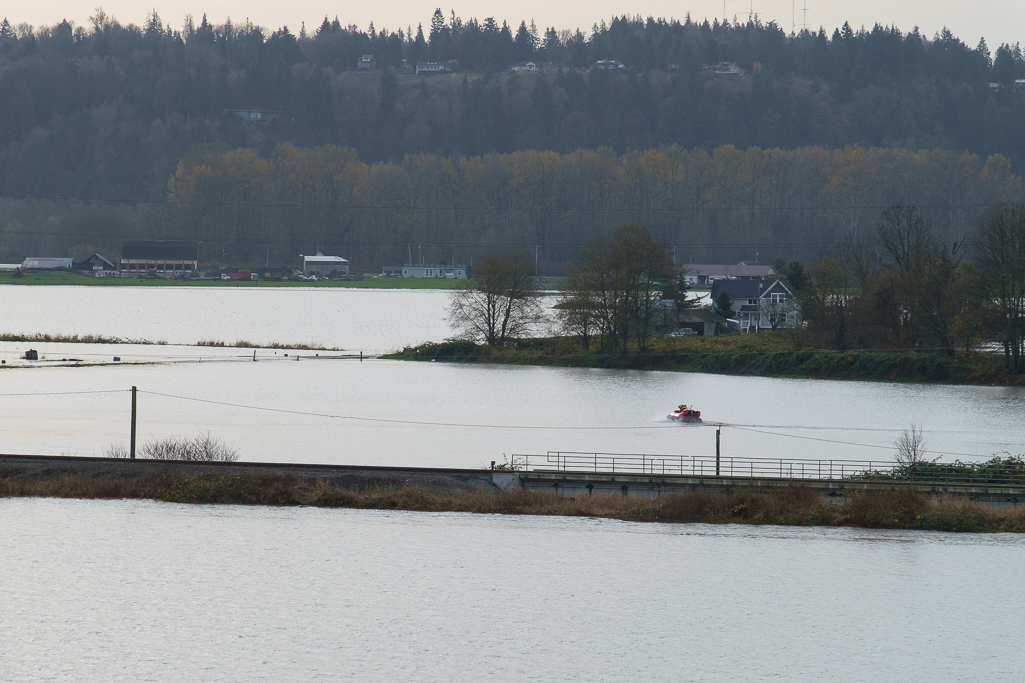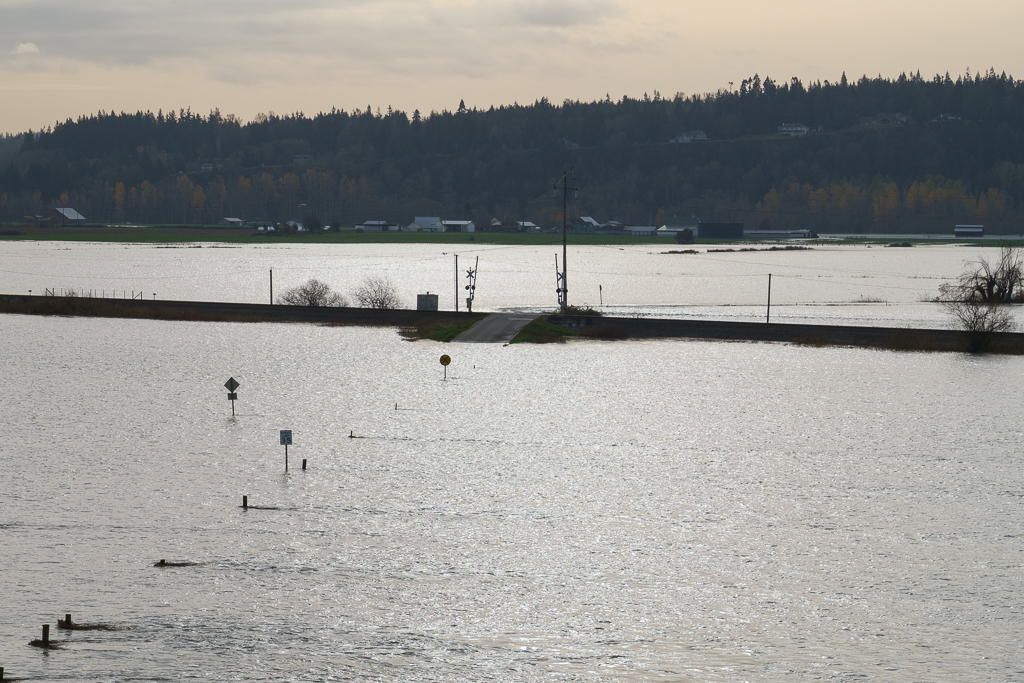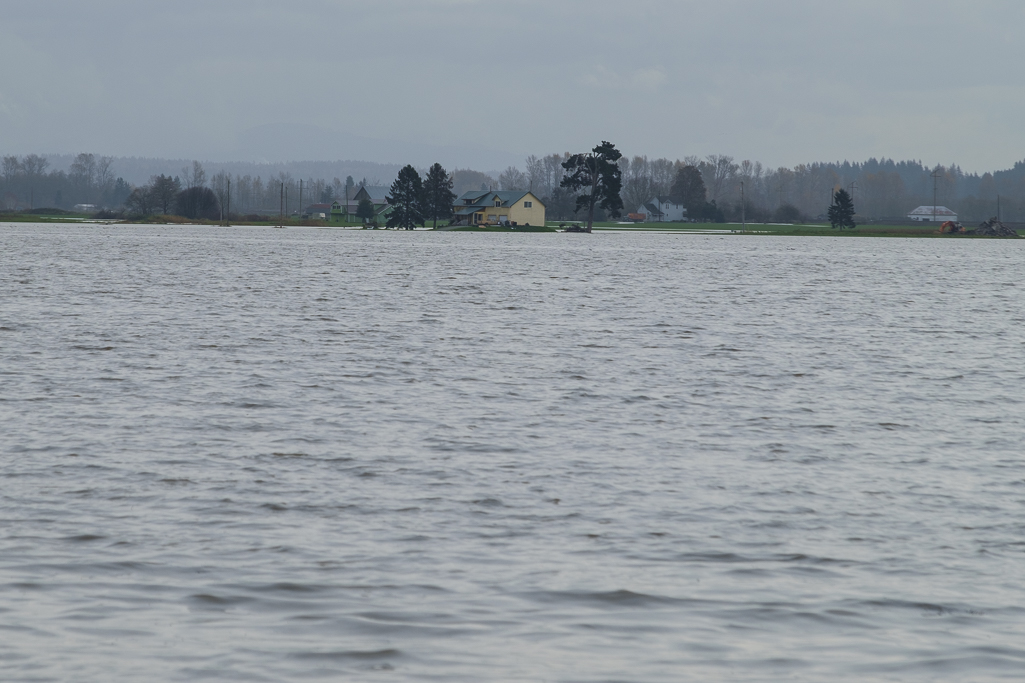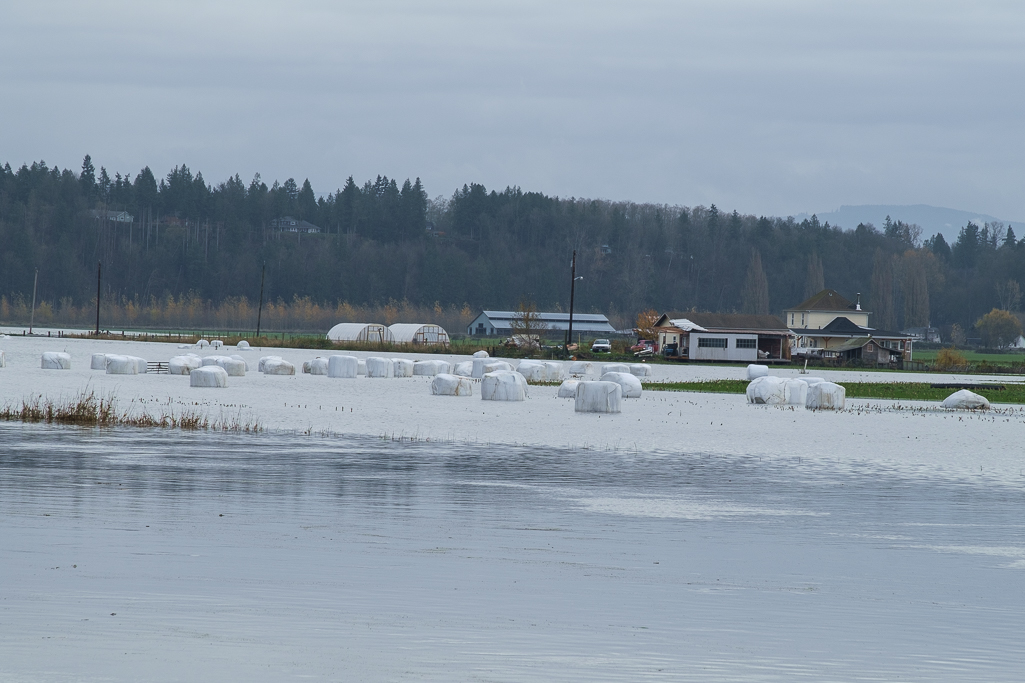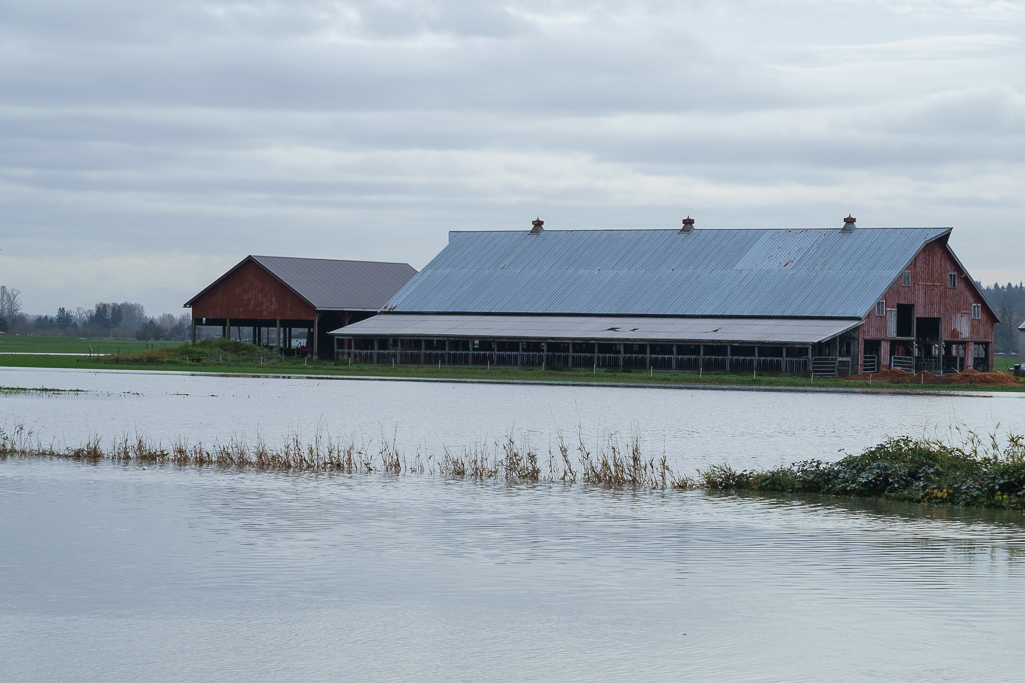Tristan doesn’t look at his farm as “just a farm.” It’s a whole ecosystem: shorebirds, rabbits, salamanders, earthworms and coyotes in addition to growing food for people.
Rebuilding an Estuary, Designed by Nature
Written by Beth Geiger, Northwest Writer
Graphics by Erica Simek-Sloniker, Visual Communications
A dramatic change has taken place in a marsh in Port Susan Bay, near Stanwood, Washington. In just three years the total length of tidal channels naturally increased tenfold, from 2,300 to 23,000 meters.
Tidal channels are key to a well-functioning estuarine ecosystem. Channels increase habitat diversity, which in turn increases species diversity. Juvenile salmon use the channels, dabbling ducks use them, and invertebrates that provide food for other species use them.
Scientists like Roger Fuller, an ecosystems ecologist at Western Washington University, are chronicling the new tidal channels, along with other changes here. Fuller says the development of so many new channels is “a big surprise.”
Marsh Revival
The new channels started forming in 2012, after The Nature Conservancy removed 7,000 feet of dike that had separated the 150-acre marsh from the rest of Port Susan Bay since the 1950s. The dike removed had over time diverted Hatt Slough, the Stillaguamish River’s biggest distributary channel, south where it spills into Port Susan Bay. That dike had also cut the marsh off from its main source of fresh water and sediment.
With marsh, river, and Puget Sound connected again, natural processes took over. Critical estuary habitat quickly began to be rebuilt. A natural revival was underway.
The channels are a big part of this revival. “Channels build connections, creating the intimate links that tie the marsh, tide and river together,” Fuller explains. “They serve as the trade routes of the estuary, funneling water, sediment, fish, and the organic matter that fuels the entire estuarine food web back and forth between marsh and tidal flat.”
Sound Science
Supported by the Conservancy, Fuller and other scientists including Greg Hood with the Skagit River System Cooperative, and Eric Grossman, Christopher A. Curran and Isa Woo from the United States Geological Survey have been studying the channels and other ways that this estuary is recovering.
The researchers analyze before and after data, and compare the restoration area to a nearby reference marsh which has never been diked. They measure suspended sediment, water temperature, salinity, current, as well as topographic and ecological changes.
New tidal channels aren’t the only “before and after” they’ve seen. When the dikes were in place, the area inside them had been starved of its natural influx of sediment from the Stillaguamish River. The estuary had subsided until it was a meter lower than the surrounding tidelands in some places. It functioned more like a pond than a dynamic estuary. For example, there was no access or protected estuarine habitat for juvenile Chinook salmon transitioning from the Stillaguamish River into Puget Sound.
With the dike removed scientists have recorded a measurable rise in the height of the marsh. During those years the sediment delivered to PSB was unusually high in part due to the March 2014 Oso landslide. However, the data suggest that even if the marsh gets half as much sediment in future years, it may still rise fast enough to keep up with the rising sea level, estimated to be an average of about 24 inches by 2100.
Lessons from Nature
Fuller says that being surprised by nature here isn’t all that unexpected. “The one thing I knew before the restoration was that I would be surprised by the changes triggered by the restoration,” he says. “There's been so little research on restoration in northwest estuaries that I knew it would be really interesting to watch it unfold.”
The restoration project is part of the Port Susan Bay Preserve, which includes 4,122 acres of estuary that the Conservancy acquired in 2001. The science being conducted here reaches much further than the Preserve itself. Along with learning new lessons, we are applying scientific concepts and models honed under this and other Conservancy projects such as Fisher Slough.
Together, these projects demonstrate that carefully planned restoration can have complementary, not conflicting, benefits for people, salmon, farms, and wildlife. The Conservancy-led Floodplains by Design provides the partnerships and funding that ensure these lessons can extend to restoration projects all over Puget Sound.
As a result of diligent science and critical partnerships like this, we are learning how to make Puget Sound more resilient as climate changes, and sea level rises.
LEARN MORE ABOUT OUR WORK IN PUGET SOUND
LEARN HOW CLIMATE CHANGE WILL AFFECT THE REGION AND WHAT WE'RE DOING TO ADAPT
The triple whammy of climate change in Puget Sound
Written and Photographed by Julie Morse, Regional Ecologist
I pulled up to the city park in Arlington on Tuesday about lunchtime to check and see what the river was doing. Guess I wasn’t the only one with that idea, it felt like pulling into a drive thru theatre. There was a line of cars – all facing the river, owners staying inside the cars, just watching and texting photos of a raging river.
It makes sense I thought, this is Western Washington after all. This is flood season. This is what we do for entertainment; we go and watch the river.
Wednesday morning after the storm had passed and the rivers had peaked I again drove down to see what the river was doing in Stanwood. Only it didn’t feel like good ol’ fashion entertainment this time. Instead there was a flurry of activity with fire trucks and rescue vehicles, and one bright orange hovercraft launching right off highway 532, going straight across the valley to rescue people stranded in isolated farmhouses.
This is not the first time the Stilly valley has flooded. In fact, it’s not even the first time this week the Stilly flooded. The Stillaguamish had two “100 year floods” this week, making this at least the 5th 100 year flood in the last ten years1. I know - either I’m really bad at math, or naming a flood after a probabilistic return interval is a really horrible way to communicate flood risk.
Our partners at the UW Climate Impacts Group released a report this week called the State of Knowledge: Climate Impacts in Puget Sound. The report synthesizes 20 years of studies on climate change, boiling it down to key points for our region. One of the key findings of the report – flood risk is increasing in Puget Sound. Not just the frequency of flooding, but the floodwaters themselves are getting higher. Substantially higher, in some places.
In preparing for releasing the report this week, we’ve started calling it the ‘triple whammy’ of increasing flood risk. Basically there are 3 big drivers of climate change that are causing increased flood risk in Puget Sound. First, you’ve got sea level rise backing up the rivers. Second, we’ve got increasing heavy rain events. Locals in Arlington told me “this isn’t our typical Arlington drizzle” and they’re exactly right. Warmer ocean temperatures and warmer air results in more moisture in the storms. And third, with warmer temperatures – more of our precipitation falls as rain not snow. Rain immediately runoffs to the nearest river causing then rapidly rising river levels.
Just to be clear, this report tells us nothing about our weather today – if for example these floods on the Stilly this week were a result of climate change. For that, we need attribution studies – a hot new topic in climate science, but not the intent of this report. Instead this report is intended to provide future estimates, and the range of natural variability we can expect, so that we can plan accordingly.
As I drove around taking photos of the Stilly flood I was amazed by people that were still home, stranded in their homes just waiting for the flood to recede. I could see dogs on the back porch of one house, desperately waiting for a tiny patch of grass so they could go take care of business. I know this certainly isn’t the first flood these folks have gone through, I know they are rich with stories of past floods. And I know they are certainly hardy folks. But I worry the past gives us a false sense of security about the future.
I hope this report helps illustrate clear differences, and helps us understand how our river hydrology is completely changing. I hope it helps us make smart choices. I know it’s easy to get completely overwhelmed and feel hopeless in the face of climate change. But climate change is not hopeless, if you can see it coming.
1Based on a flood return interval calculated through 1998 and reported in Snohomish County’s 2004 flood hazard plan.Wednesdays peak flow was the 5th highest ever recorded at the Arlington gage, and technically a 500 year flood event.







